Toyota is the first to break with official images and information for the Toybaru sports car. The production model is called the GT 86 and, like the concept model, the name pays respect to the AE86 Corolla.
Interestingly the press release from Toyota Australia refers the car as simply the “86â€, saying that’s what the car will be referred to in Japan. It would seem, then, the Celica nameplate won’t be reborn down under; looks like we’ll be running with 86.
We’re told the GT 86 is lightweight, but oddly, no official weight has been specified just yet. Maybe they’re keeping that for the impending public reveal at the Tokyo Motor Show. [Ed: We’ve since discovered the standard kerbweight is 1180kg.] We can tell you the GT 86 has a 53:47 front–rear weight distribution.
Toyota has confirmed the engine spec of the 2.0 litre D-4S boxer engine will be 147kW/205Nm, which is just what we were expecting. Manual and automatic transmissions will be offered, both 6-speed. Of course, power is sent to the rear wheels only.
Thankfully, the more extreme elements of the styling shown in the concept car have been tamed for production spec. But, in doing so, has Toyota taken it a step too far? The ‘look at me’ lighting details have made way for a ‘yes, I think you’ve seen me before’ treatment.
Overall, though, the GT 86 is a welcome addition to the Toyota lineup. The next question now is, will the reality match the hype?
Press information from Australia and the UK, along with a photo gallery for you after the break.
UPDATE 28 November: Toyota Australia has confirmed with AUSmotive the car will be marketed locally as the 86. Further detail on price and specification will be available closer to the Australian launch in mid-2012.
Toyota unveils new “86†sports car
27 November 2011 – Toyota has taken the wraps off its newest sports car, announcing it will be called Toyota 86 or “hachi roku” in its home market, Japan.
The unveiling occurred when Toyota president Akio Toyoda drove a production prototype down the main straight of the Fuji Speedway, south of Tokyo.
Mr Toyoda said the new rear-wheel-drive sports car was all about “waku doki” – a car that creates excitement and gets your heart racing.
“I am very proud of this car,” Mr Toyoda said.
“Thank you for the patience of car lovers. They are going to enjoy this car.”
The 86 is a rear-wheel-drive car with intuitive handling that embodies the essence of driving enjoyment.
It features the world’s first horizontally opposed D-4S engine, combining “boxer” engine technology with Toyota’s cutting-edge D-4S direct injection technology.
The engine is installed front mid-ship to create an ultra-low centre of gravity and low inertia. It is the world’s only horizontally opposed engine and rear-wheel-drive package.
As a result, the 86 offers fun driving at a level unprecedented in earlier sports cars.
It carries on the spirit of the AE86 Corolla in its aim to be a car that evolves with its owner.
The lightweight and compact rear-wheel-drive platform was designed to achieve superior handling and create the world’s smallest mass-production four-passenger sports car (by volume).
The vehicle’s newly developed engine delivers exceptional output and torque as well as superior response at low and medium speeds.
The D-4S, with separate twin injectors for both direct injection and port injection, boasts a high compression ratio of 12.5:1. This provides high output and high torque over a wide range of engine speeds and contributes to improved environmental performance.
The engine’s redline is 7500rpm with maximum output of 147kW. Even so, the engine achieves fuel efficiency and environmental performance that rivals that of a standard two-litre sedan.
Customers will have the choice of a six-speed manual transmission or a special sports-driving six-speed automatic transmission.
The 86 has the lowest hip-point of any Toyota-brand production vehicle and creates a driving position suited for driving enjoyment.
The rear seatbacks fold down to the front to create a luggage space that can accommodate four sports wheels or two golf bags.
The exterior design features a predatory look at the front; the sides are a modern take on Toyota’s sports-car heritage; and the rear view is wide and sturdy despite the compact cabin.
The interior design seeks the essence of sports cars by emphasising the form, placement and materials of each element.
The seatbacks and cushion surfaces are designed to provide support during acceleration g-forces from the front, the back and to the sides. In addition, the shape of the front seats is designed to prevent elbows from interfering with gearshift operation.
The circular steering wheel has a diameter of 365 mm, the smallest in a Toyota-brand vehicle. The wheel’s surface was optimised with exhaustive feedback from test drivers to enhance steering performance and grip.
A three-cluster meter built around the tachometer has been designed with particular attention paid to display placement, markings and typeface to enhance visibility and readability during sports driving.
Main Specifications of 86 (Production Prototype)
Dimensions
- Length: 4,240 mm
- Width: 1,775 mm
- Height: 1,300 mm
- Wheelbase: 2,570 mm
- Track: Front 1,520 mm, Rear: 1,540 mm
- Seating capacity: 4
Engine
- Total displacement: 1,998 cc
- Type: Horizontally opposed four-cylinder, direct-injection DOHC
- Bore × stroke: 86 × 86
- Maximum output: 147 kW / 7,000 rpm
- Maximum torque: 205 Nm / 6,600 rpm
Transmission
- 6-speed manual; six-speed automatic
Driveline
- Rear-wheel drive
Suspension
- Front: Struts
- Rear: Double wishbone
Brakes
- Front: V disk
- Rear: V disk
Tyres
- Front: 215/40R18
- Rear: 225/40R18
Fuel tank
- 50 litres
World debut for Toyota GT 86 sports car at the Tokyo motor show
KEYPOINTS
- Entirely driver-focused sports car, designed to recapture the fundamental joys of motoring
- World’s most compact four-seater sports car, delivering very low centre of gravity and excellent power-to-weight ratio
- A return to Toyota’s sporting roots, with a front-mounted engine and rear-wheel drive package
- Powertrain combines 197bhp 2.0-litre flat-four boxer engine with torque-enhancing D-4S injection technology
- Design achieves outstanding aerodynamics while recalling Toyota’s sports car heritage
- New car to be called the GT 86 in Europe, in tribute to Toyota’s GT car heritage
- On sale in the UK in June 2012
The anticipation is over: Toyota’s new GT 86 sports car makes its world debut at the Tokyo motor show on November 30. The compact 2+2 model, one of the most keenly awaited new cars of the coming year, will go on sale in the UK in June 2012.
The GT 86 has been conceived as an entirely driver-focused machine, designed to deliver the core qualities of the classic sports car experience. That means precise, instant response to the smallest throttle and steering inputs and the kind of performance that appeals to those for whom driving is a passion, not a necessity.
The GT 86 is built on a new platform, with a highly aerodynamic bodyshell stretched tight over the car’s mechanical elements. Rather than fitting a heavy, large capacity powertrain, Toyota has opted instead to go back to its sporting roots, installing a compact, front-mounted, free-revving petrol engine that drives the rear wheels.
This four-cylinder “boxer†unit generates 197bhp at 7,000rpm and maximum torque of 205Nm at 6,600rpm, giving the GT 86 brisk, engaging performance.
The powertrain is matched to the world’s most compact four-seat design to create a car that benefits from light weight, low inertia and a low centre of gravity to achieve the best possible power-to-weight ratio. For the driver that means lively, accessible performance and dynamic character with minimal intrusion from electronic systems.
Packaging
The GT 86 measures 4,240mm long, 1,285mm high and 2,570mm wide, dimensions which make it the most compact four-seater sports car available today.
Both the powertrain and the driving position have been set as low and as far back as possible to achieve the best balance: the car has a near-perfect 53:47 front-to-rear weight distribution. The flat-four engine format and the driver’s hip point – the lowest of any current Toyota production model – together give the GT 86 an ultra-low centre of gravity, at just 475mm.
The GT 86 makes the most of a light kerb weight, making it easy for drivers to exploit its nimble handling and cornering poise. The suspension features MacPherson struts at the front and double wishbones at the rear. The car rides on 17-inch wheels and is fitted with ventilated disc brakes fore and aft.
World’s first horizontally opposed engine with D-4S
The GT 86’s engine is the result of a joint Toyota and Subaru development programme that brings together their technical know-how and mutual passion for sports cars.
Toyota has added its D-4S injection technology to Subaru’s new, horizontally opposed, naturally aspirated 1,998cc four-cylinder boxer engine. This system features separate twin injectors for both direct and port injection, and a high 12.5:1 compression ratio, increasing power and torque across a wide range of engine speeds without sacrificing fuel efficiency and environmental performance.
The flat-four engine has equal bore and stroke of 86.0mm and drives through either a six-speed manual or six-speed automatic transmission. The manual offers quick, precise shifts using a tactile, short-throw lever; the automatic transmission can be controlled using paddle shifts mounted on the steering wheel.
Power is distributed to the rear wheels via a limited slip differential to give the best possible grip in all driving conditions. The ABS and switchable vehicle stability control systems have been tuned specifically to deliver dynamic stability at the limit of the car’s performance envelope with minimal electronic intervention to help preserve the purity of the driving experience.
Design
The design of the GT 86 successfully works within the technical constraints of achieving the most compact dimensions possible, a low centre of gravity and aerodynamic performance inspired by motorsport technology, while also displaying evocative, sweeping styling that recalls Toyota’s sports car heritage.
Toyota’s new design language informs the styling, as in the way attention is focused on the lower part of the car with the large lower grille. Elsewhere the “keen†approach can be witnessed in the clear, expressive lines.
The lower grille’s “scorpion†look gives the GT 86 a more powerful appearance, with further sporting details including the model-specific 17-inch alloy wheels, rear spoiler, twin exhausts and the “86†piston logo that denotes the car’s special powertrain configuration.
On board, the ergonomics and function of every element the driver interacts with have been scrutinised to make driving the car as natural, instinctive and rewarding as possible. For example, the steering wheel has a 365mm diameter, making it the smallest ever fitted to a Toyota, and it is trimmed in buckskin, developed from exhaustive feedback from test drivers on how to achieve the best steering performance and grip.
The three-meter instrument cluster is arranged around a large tachometer, its design benefiting from close attention to the positioning of the displays, markings and typeface. The result is the best possible visibility and readability. The driver-focus of the cockpit is further reinforced by the carbon-effect trim, all-black roof lining, red stitching on the upholstery, aviation-style rocker switches and lightweight, aluminium pedals.
Toyota’s 50-year sports car heritage
The GT 86 may be launched as the world’s only current sports car to feature a front-mounted, horizontally opposed engine and rear-wheel drive, but it cannot claim to be the first. That honour is held by Toyota’s two-cylinder boxer-engined Sports 800, which the company began developing in 1962. Since then, Toyota has established a long history of producing exciting, driver-focused sports cars with a front-engine, rear-wheel drive format that have proved as popular with the public as they have been successful in competition.
The beautiful 2000 GT, a coupe powered by a 2.0-litre straight-six engine, was first displayed at the 1965 Tokyo motor show and helped establish Toyota’s global reputation as a sports car manufacturer.
Launched in 1971, the first Celica models featured rear-wheel drive powertrains and were praised by enthusiasts for their agility. All four Supra generations came with straight-six engines and rear-wheel drive, while from 1984 the MR2 won recognition as one of the best handling sports cars in motoring history.
The inspiration for the GT 86, however, is the Corolla GT (or Levin) AE86, a car with an enduring reputation for delivering sheer excitement and capturing the fundamental joy of driving. Its front-engine, rear-wheel drive package, compact dimensions, light weight, impeccable balance and superior power-to-weight ratio made it a must-have choice for rallying and circuit driving throughout its production life, from 1983 to 1987. Here in the UK the GT claimed two British Touring Car Championship titles and a series of top-level rally victories.
The GT 86 is a genuinely lightweight machine that offers the intimacy and involvement of a car that can be driven as though an extension of the driver’s body. In this way, it perfectly recaptures the exhilarating spirit of the last of the AE86. And, with numerous customisable parts, its shares its predecessor’s aim to be an affordable car that will evolve with its owner.
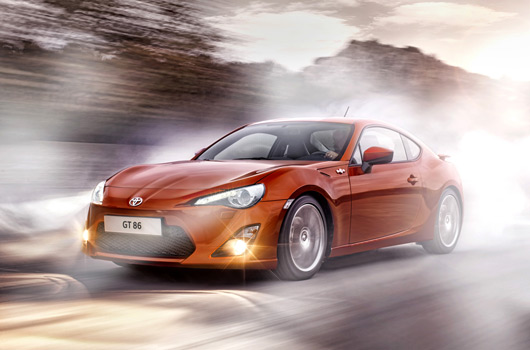
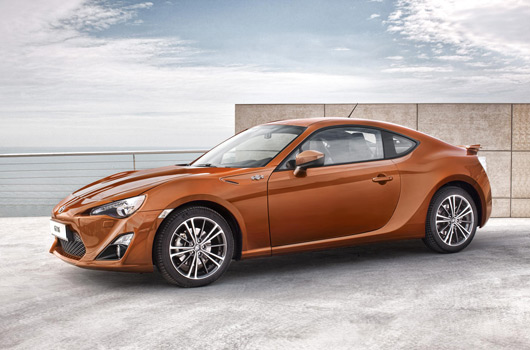
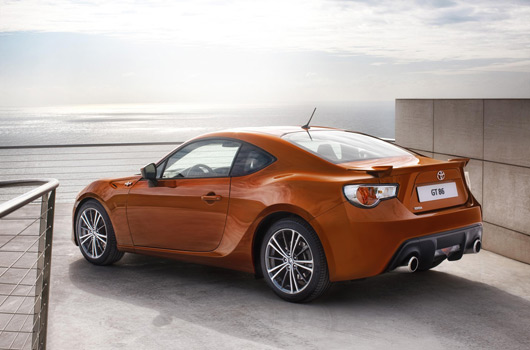
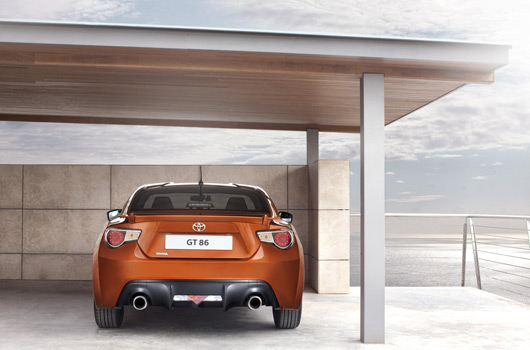
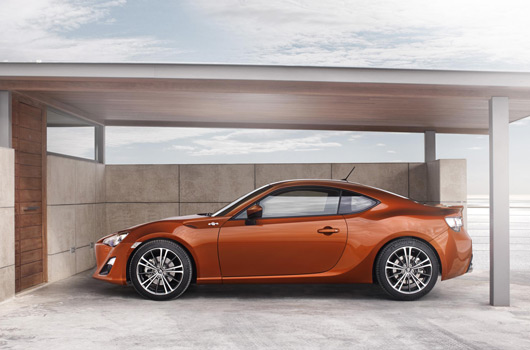
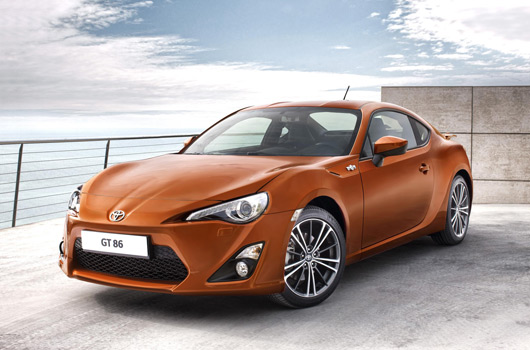
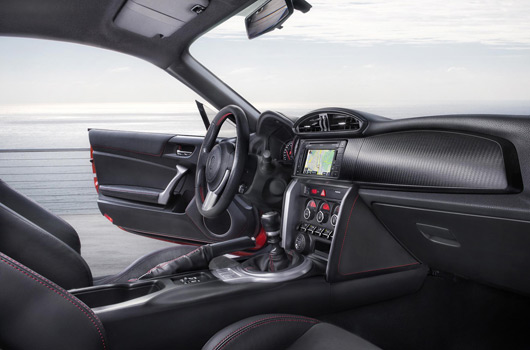
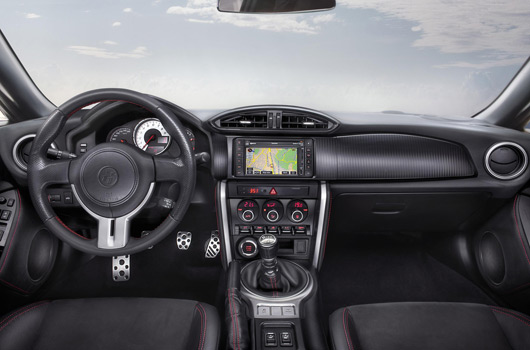
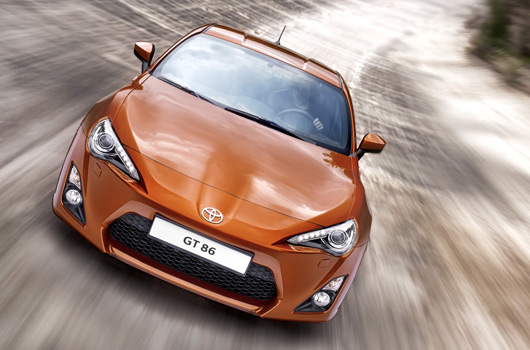
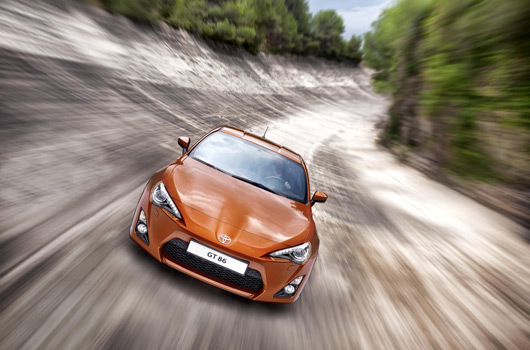
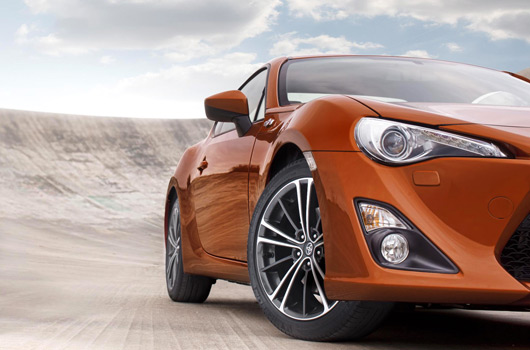
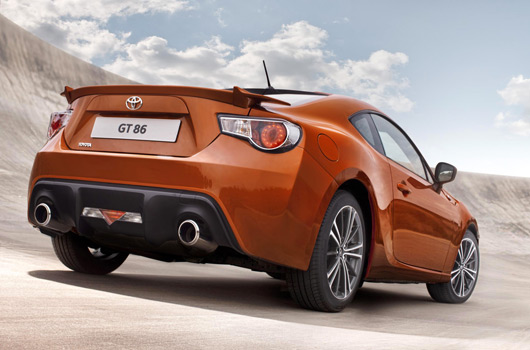


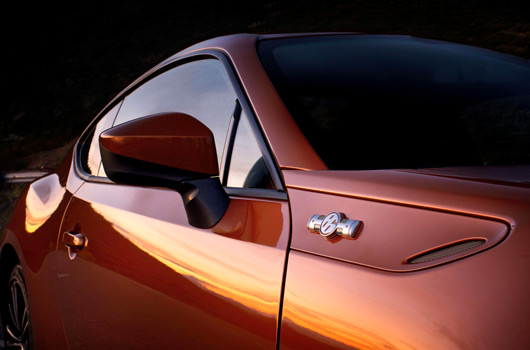
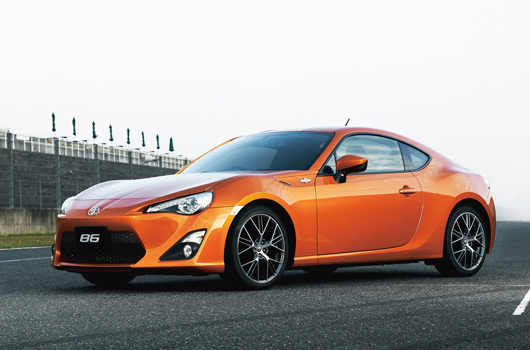
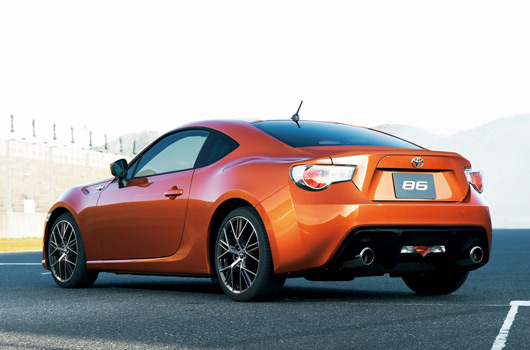
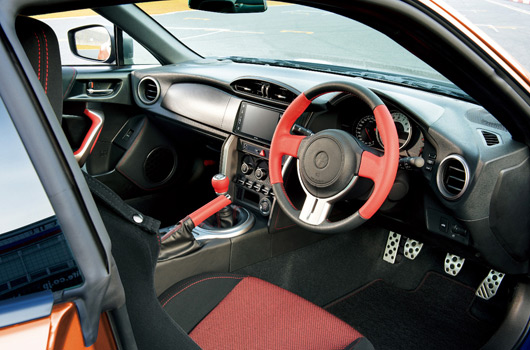
25 replies on “Toyota GT 86 revealed”
Yay!
Can’t wait calling Toyota today to see if they hbe a price for aust yet.
Apprently it will be made avaliable in april 2012, world wide.
Check out some extra photos here.
http://86-club.com/forums/topic/5-photos-of-the-toyota-86/
[…] the official release of pics and info, Toyota has published a new promo video of its 147kW/205Nm rear-wheel drive GT 86. […]
[…] that the Toyota 86 (we’re supposed to say eight-six apparently) has been revealed fans of the car will be more […]
It’d want to be cheap and lightning quick for me to buy it. It’s hella ugly.
lol wont be hella fast… what car do you think looks god benough?
More pics than you can poke a stick at…
http://autoc-one.jp/toyota/report-908981/photo/
[…] the Toyota 86 has been gaining attention since its official release. So we thought it worth reminding you about […]
[…] to be expected it’s a like for like machine under the skin when compared to the Toyota 86. Really it’s just a few cosmetic differences to the bodywork that set these Toybaru cars […]
[…] since the Toyota 86 was released people have wanted to know what the 2.0 litre Toybaru boxer engine sounds like. Now, […]
[…] we’ve assembled a variety of images from the show featuring the usual suspects, such as the Toyota 86 and it’s close relative the Subaru BRZ. There’s also the weird and wonderful, too, in […]
[…] suspect both Subaru and Toyota have deliberately under-engineered these cars to a degree, which will allow aftermarket tuners to […]
[…] stop anyone applauding the suggestion Toyota Racing Developments (TRD) is planning to give the Toyota 86 a boost by whacking on a supercharger to the 2.0 litre boxer […]
[…] number of BRZs will be offered from May next year. That means the six-starred Toybaru may beat the Toyota 86 to the local […]
[…] a 2+2 hybrid powered sportscar with speculation it could even be based on the Toyota 86 […]
[…] Harris has just filed a review on the Toyota 86 over at PistonHeads. There was no promise of an extensive drive, just a thrash around the flat […]
[…] creation of the Toyota 86 and the mostly identical Subaru BRZ was designed to revive the enthusiast market keen to let rip in […]
[…] must have been napping in January when the Tokyo Auto Salon was on and the Toyota GT 86 TRD Performance Line was first shown. Three images and a few paragraphs from a press release gave […]
[…] advent of the tuner’s blank canvas that is the Toyota 86 hasn’t taken long to be exploited. In fact, all that’s left of this one is the outer […]
[…] will be racing two of its new back-to-basics GT86 models at the 24 hour race this weekend. They’ve been entered under the Gazoo Racing banner, who are […]
[…] anticipating the Australian launch of the Toyota 86 sportscar were given a boost recently when the car was spotted at Mount Panorama in Bathurst. […]
[…] in Melbourne may well be able to lay claim to being the first Australian dealership to have a Toyota 86 on their forecourt, as these pics […]
[…] Facebook page the whispers we’d already heard: pricing and local specifications for the new rear-wheel drive 86 sportscar will be announced at 10am on Monday 4 […]
[…] of tomorrow’s release of official Australian pricing and specifications for the Toyota 86 sportscar we bring you a selection of 50 images sourced from Toyota UK. We expect we’ll be adding a few […]
[…] Australia has just announced pricing for its new 86 sports coupé. And we think fans of the car will like it: the base GT model starts from $29,990 and the […]